The story of Pellas
In the year 1884
The new homestead of Pellas stood ready, bigger and grander than the other houses in the village. The new house sailed like a beuatiful ship on top of the Pellas hill. This was the ship owner and farmer Erik Petter Eriksson's legacy to the afterworld, the jewel in his fleet. At the moment the stories are only in swedish, but an english translation is forthcoming.

Erik Petter’s sailing ships
The schooner, 106 lasts, was built in Lemland in 1838, and clinker construction was applied in 1843. At that time, the vessel was owned by Per Andersson from the Andersas farm in Flaka. In 1851, Erik Petter Eriksson married Per Andersson’s daughter. Erik Petter became the owner of Trefanten, but it is unknown whether this happened before or after the marriage. Trefanten was shipwrecked in a dramatic snowstorm on 4…
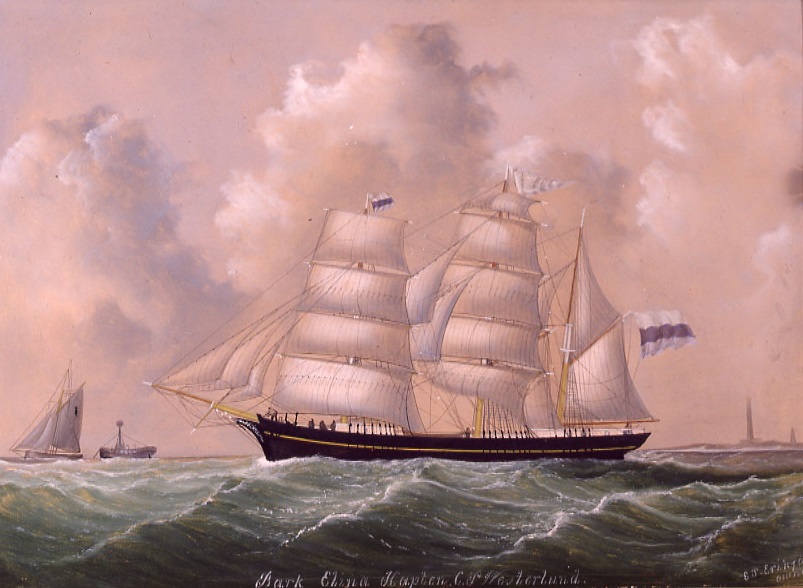
Barque Elina
Pellas in literature
Pellas is as much a literature museum as it is a seafaring museum. The museum was inspired by two novels that describe Pellas and the surrounding area’s life from the second half of the 19th century to the 1950s. Ulla-Lena Lundberg, whose paternal great-grandmother Erika (“Kristina” in the novel) was born at Pellas, wrote the novel Leo in 1989. In the book, she portrays “Erik Petter’s” life at the “Simons”…

Schooner Leo, built in Sideby, Ostrobothnia in 1870.
Herzogin Cecilie and Pellas
Sven Eriksson, born at Pellas in 1903, became known as the young captain of Herzogin Cecilie. It was the flagship of Ålandian major shipowner Gustaf Erikson’s grand sailing fleet. Sven started his seaman career on the barque Prompt. After that, he sailed as a mate on Killoran, Baltic, and Jenolin before becoming the youngest captain of Gustaf Erikson’s sailing ship in 1929. Sven was Herzogin Cecilie’s captain when the vessel…
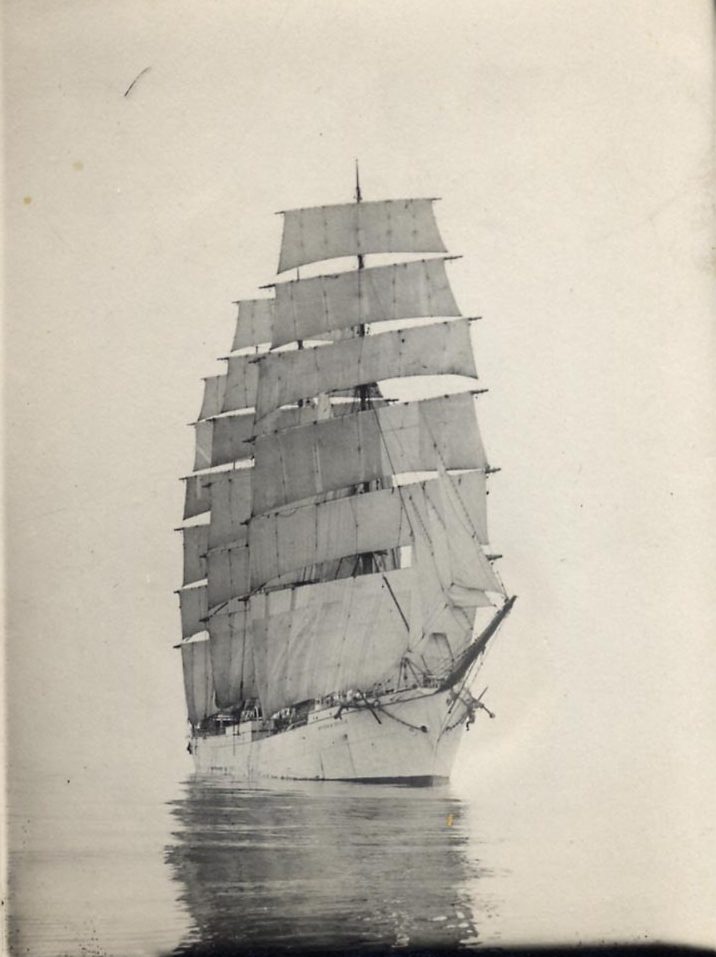
The four-masted barque Herzogin Cecilie is anchored by Falmouth, England.
Erika and Carl Gustaf Lundberg
Writer Ulla-Lena Lundberg’s books Leo and Stora världen are based on and inspired by life at Pellas and in Granboda. Ulla-Lena Lundberg’s paternal great-grandmother, Erika Lundberg (“Kristina” in the novels), was born at Pellas in 1851. The tie between the Eriksson and Lundberg families was created when Erika from Pellas married Carl Gustaf Lundberg (born in 1839) from the Hansas farm in the same village. Carl Gustaf was a shipmaster…
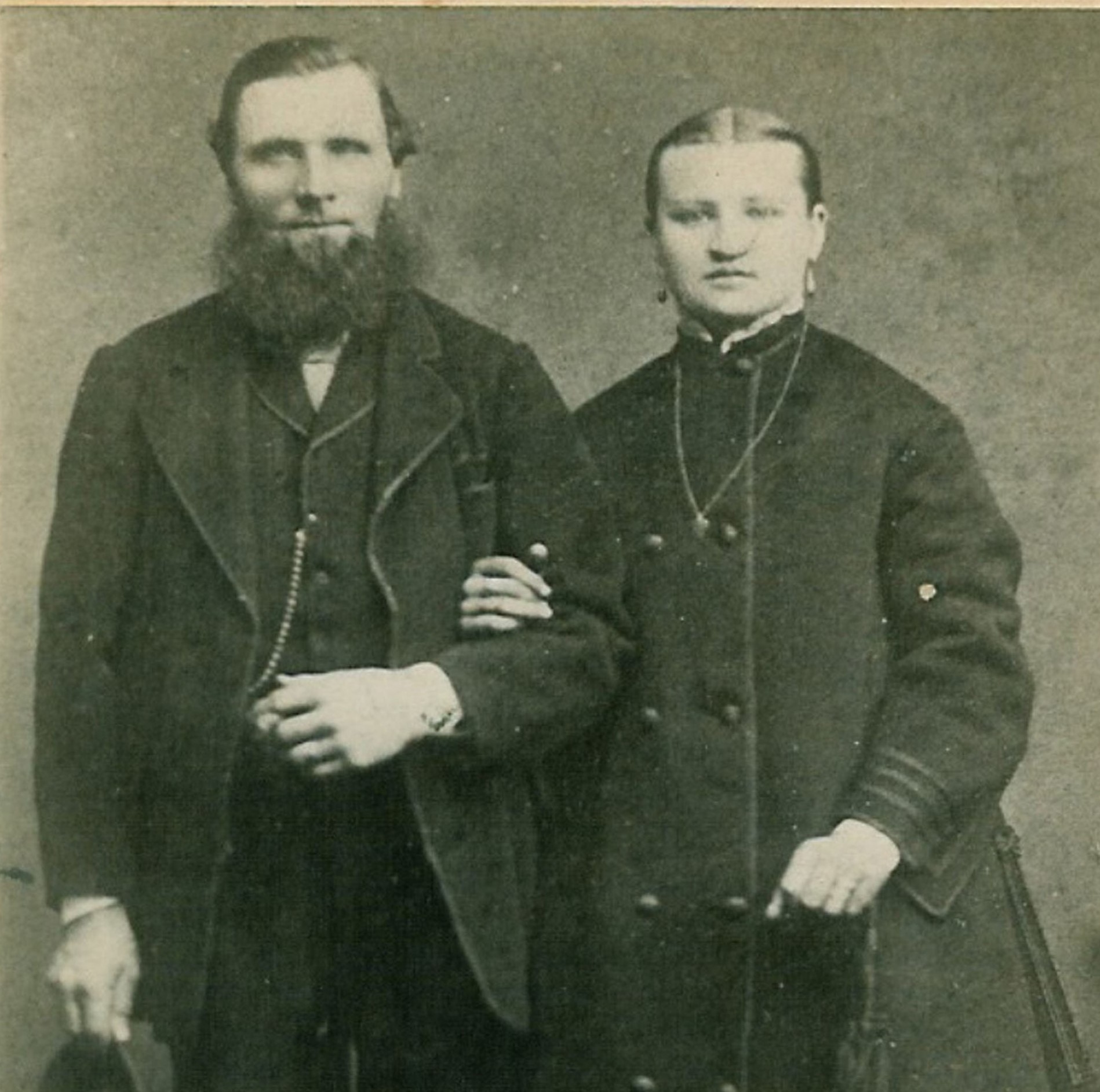
Carl Gustaf and Erika Lundberg were probably on honeymoon on the schooner Leo under the command of Carl Gustaf.
August and Irene Eriksson
August (born in 1856) got possession of Pellas after his father, Erik Petter. He also became the shipowner of Freja after his father. August started his seaman career at the age of 13 as a ship’s boy. After passing a merchant marine examination, he became captain of schooner Cedia, barques Augusta and Tähti, and schooner Freja before becoming a full-time farmer at Pellas in 1902. August was known as a…
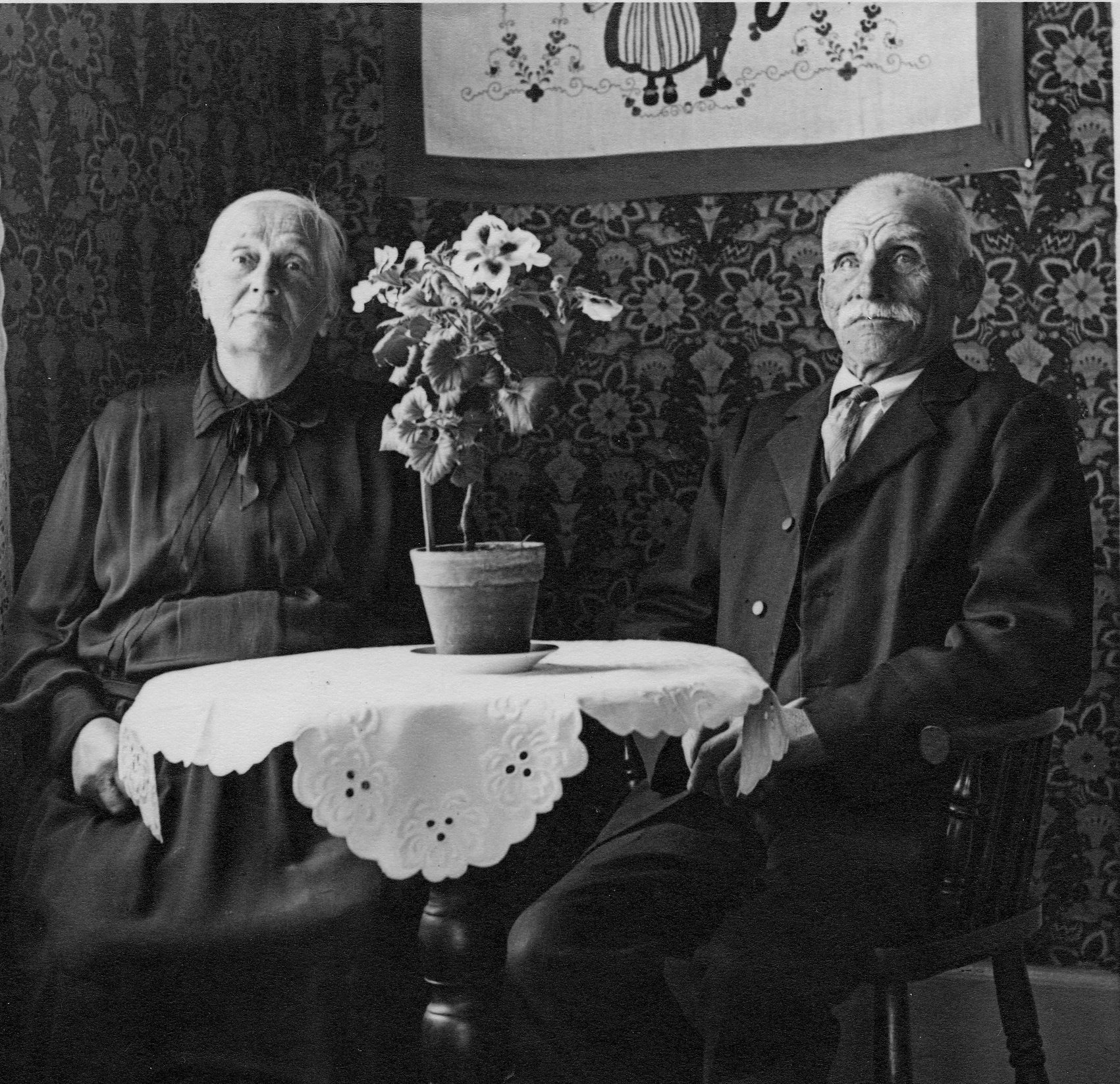
Irene and August Eriksson sitting in the Pellas drawing room.
Erik Petter Eriksson
Erik Petter Eriksson was born in 1823 as the oldest sibling of five. Erik Petter was very young when he got the possession of his fathers’ farm, Pellas. The father died in 1837 and left behind a house burdened with debt. According to the story, the intention was to sell the farm and its movables at auction, but enterprising 15-year-old Erik Petter managed to talk all creditors into waiting with…
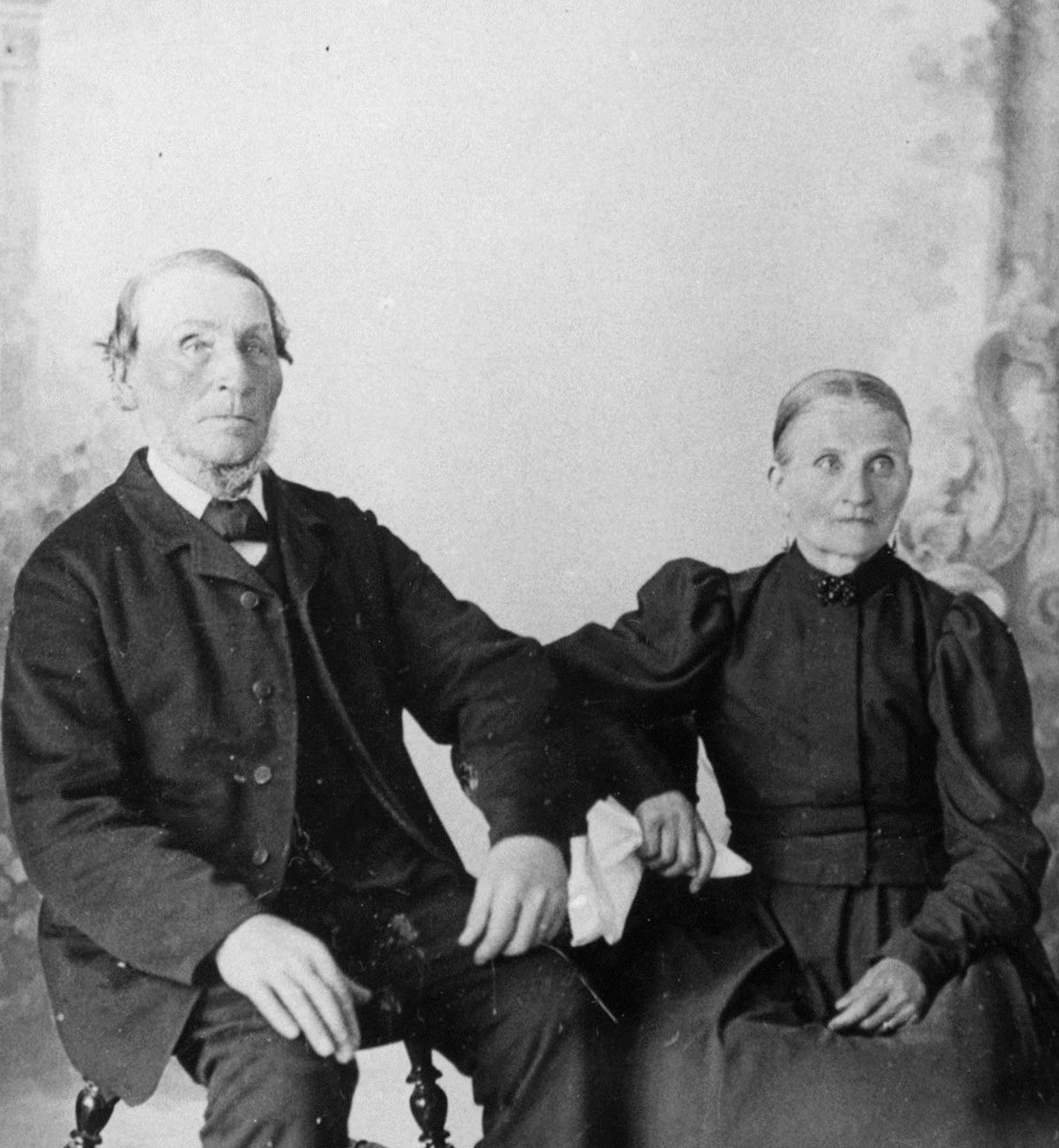
Erik Petter and Brita Stina, the former farmer couple of Pellas.
People of Pellas
The Eriksson family has roots far back in the history of Pellas. The family’s ancestor Erik Petter Eriksson built the house that is now a museum. Many generations have lived on the farm before and after Erik Petter. The family’s last farm owner, Peder Eriksson (Erik Petter’s grandchild) donated his childhood home, which made it possible to turn it into a farm and family museum. Erik Petter’s offspring have kept…
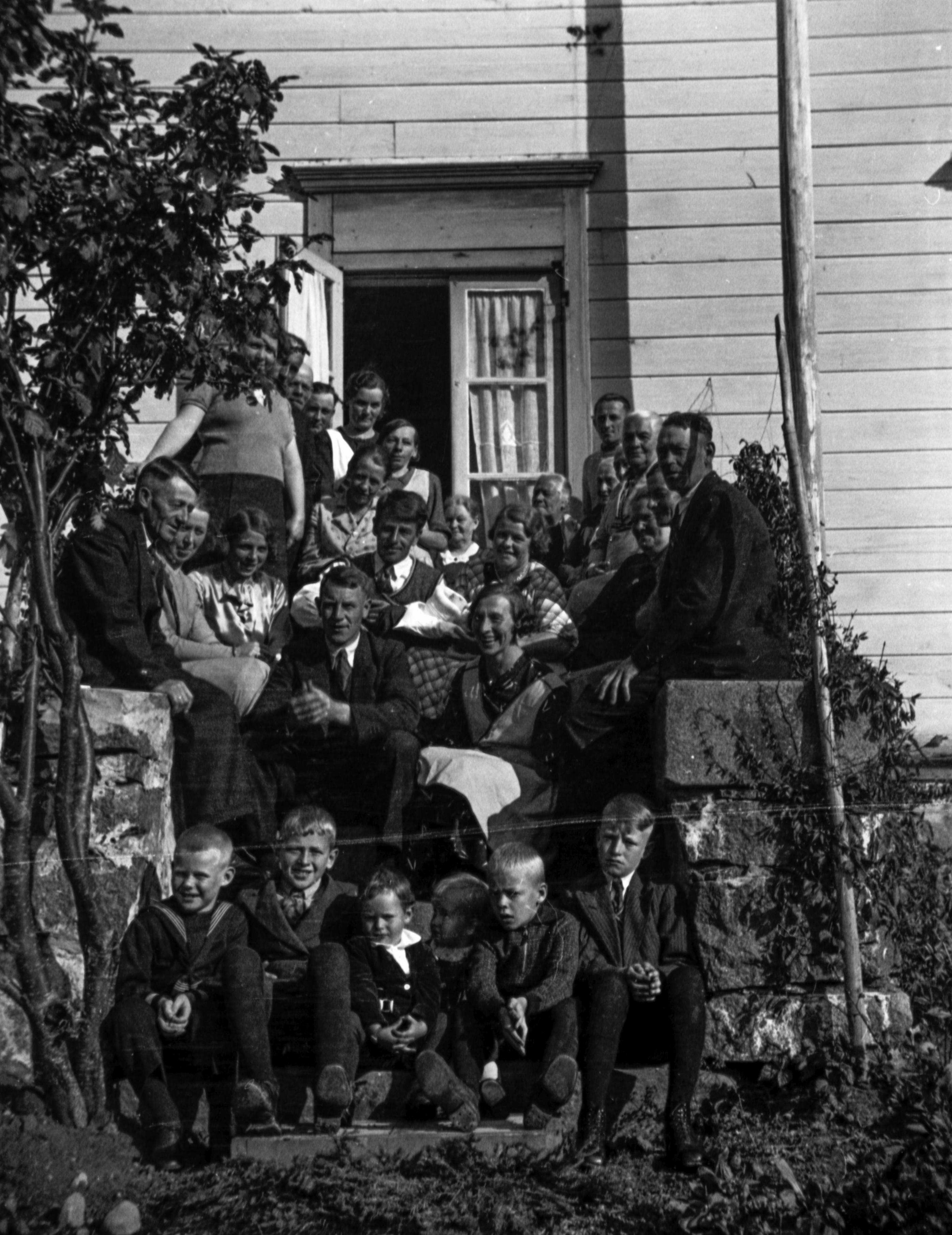
Family and friends gathered on the steps in front of Pellas.
Pellas becomes a museum
Finland-Swedish Ulla-Lena Lundberg’s Leo was published in 1989. The book is about the Ålandian schooner Leo, built in Sideby in 1870, and people related to the vessel. The book is mainly set on the “Simons” and “Eskils” farms in Granboda – which in reality are Pellas and Hansas – and tells about the people on these farms. This is the beginning of Ålandian museum history. In the book, the “Simons”…

A grand house on the Pellas hill, Granboda peasant manor.
Magnificent shipmaster’s homestead Pellas
The Pellas main building is impressive. The house is 21.5 metres in length and 11 metres in width. The downstairs living area is 250 square metres. In some of the downstairs rooms, the ceiling height is over three metres. The building also has a large, open attic. The current main building was built by shipowner Erik Petter Eriksson in 1884. The Pellas farm was owned by the Eriksson seafaring and…
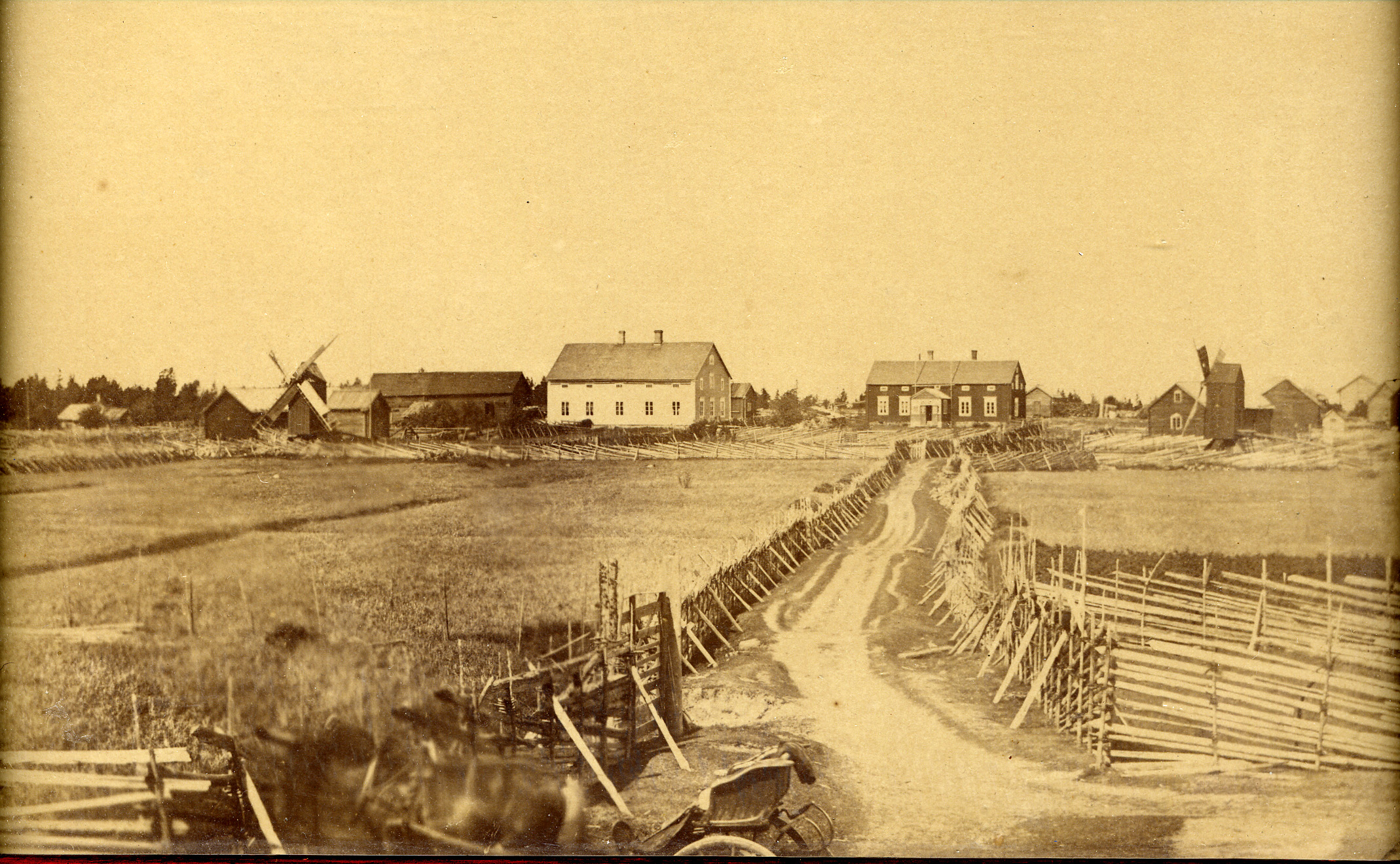
On the right is Pellas’ old main building, next to the new house of the neighbouring Andersas farm.
Peasant seafaring at Pellas
While operating as a shipowner, Erik Petter Eriksson was the head shipowner of the following vessels: Trefanten, Fredrika, Augusta, Leo, Linnea, Elina, Ceres, Åland, Eli, Cedia, Primus, Elida, Wendla, and Freja. In addition, he was a shareholder of many vessels. Of Erik Petter Eriksson’s vessels, Leo was the most infamous; it was called “Människoätaren” (maneater) because it had a reputation for claiming lives on each trip. Despite its bad reputation,…
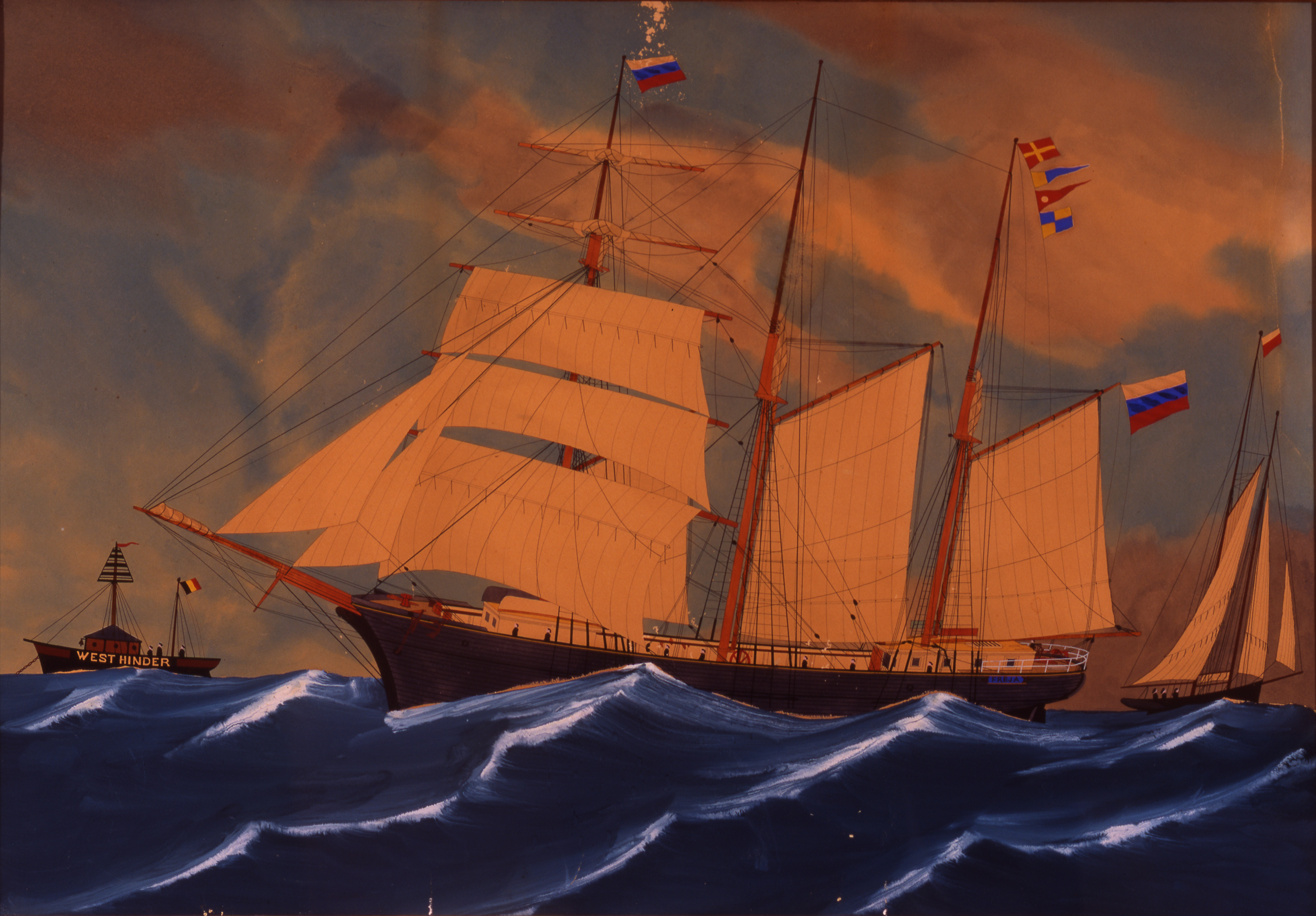
Schooner Freja, one of Erik Petter’s sailing ships.
Peasant seafaring
Peasant seafaring was a form of seafaring that Ålandian farmers practised in the second half of the 19th century and at the beginning of the 20th century. During the golden age of peasant seafaring, a successful vessel could earn its acquisition costs in two or three seasons. The cargo ship traffic mainly focused on the Baltic Sea and the North Sea, but some voyages were made farther. Lemland and Vårdö…
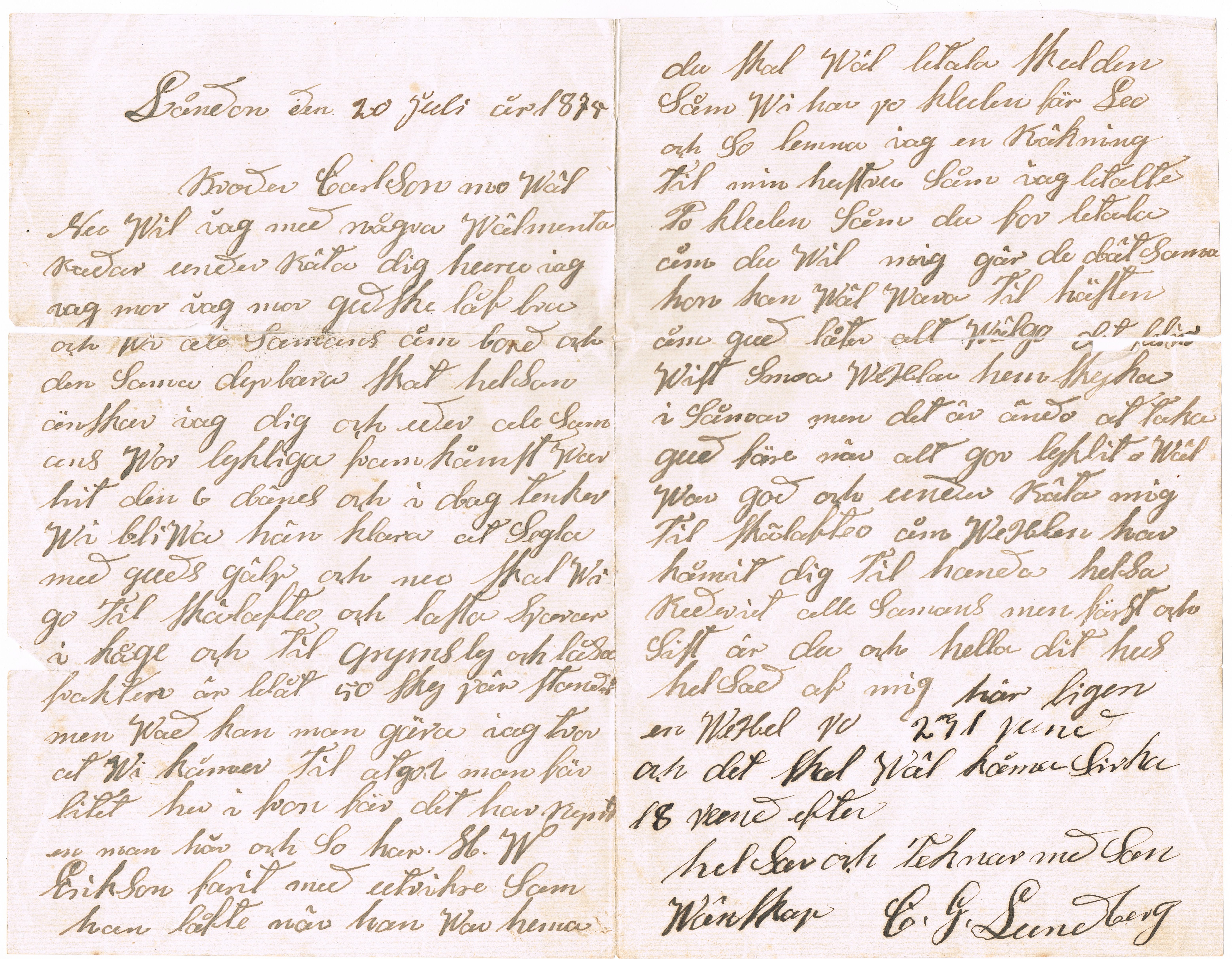
Shipmaster and neighbour Carl Carlsson from the Kallas farm received the letter that Leo’s captain Carl Gustaf Lundberg sent from London.
Ålandian shipmaster’s homestead
During the second half of the 19th century, seafaring influenced the Ålandian cultural landscape to a considerable extent. Due to the increased income along with seafaring, farmers could build bigger houses. Bigger houses were status symbols and permanent proof of a shipowner’s wealth and success. Shipmasters and shipowners also reformed the Ålandian agricultural society; they modernised ways of living in a society that otherwise were traditional and conservative. Beginning in…
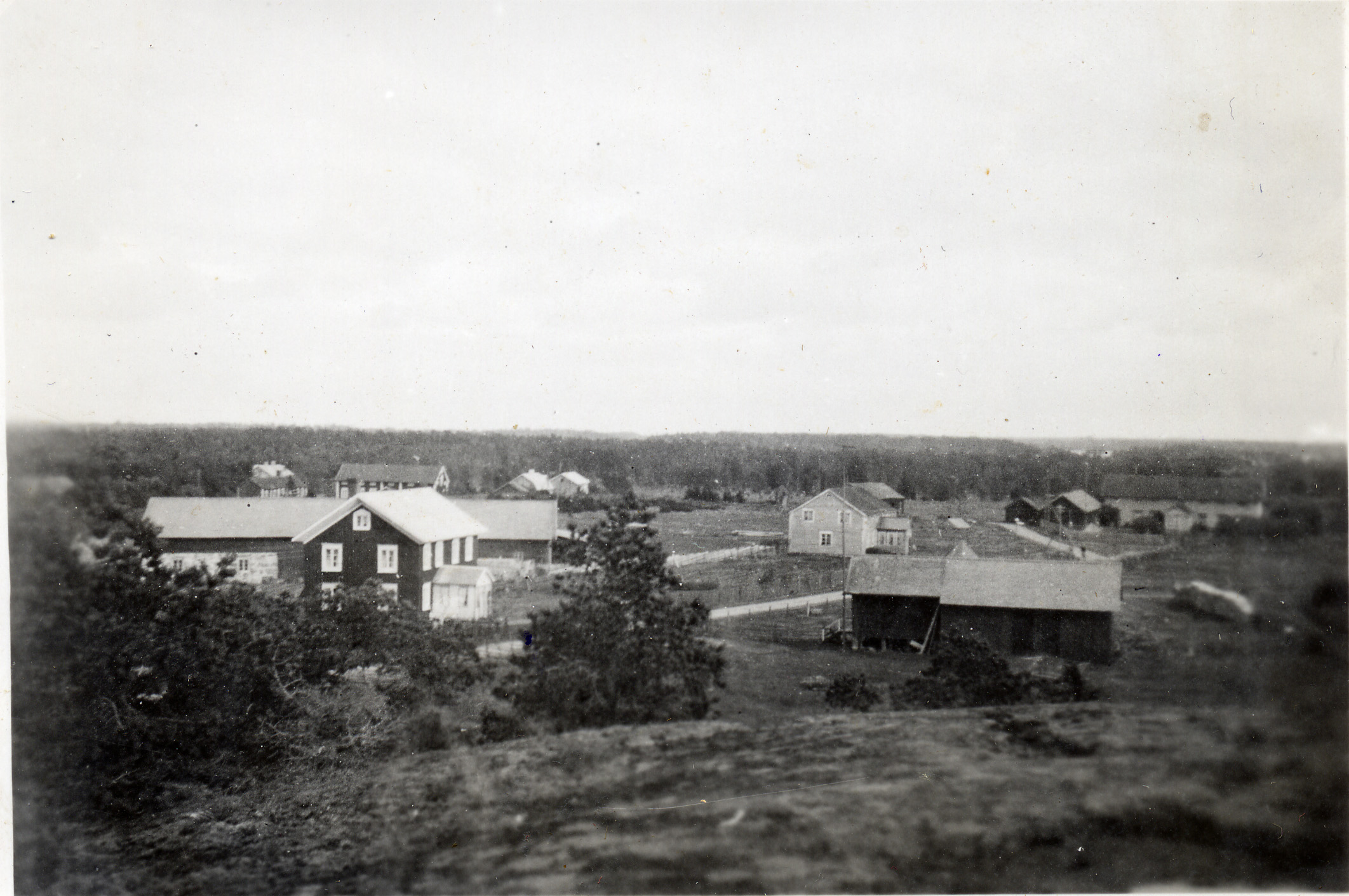
The view from the Hagelberg farm over Granboda and the shipmaster’s homesteads (Hansas, Nybonds, Erkas, and Kallas).
The Christmas Eve fire of 2005
On Christmas Eve in 2005, a fire destroyed the Pellas main building. The fire started from a switchboard, and the house was already well ablaze when the neighbours called the fire brigade. The fire spread through the drawing room and up to the open attic. Both the drawing room and the attic were completely destroyed. The eastern part of the house survived better, and some of the objects from there…

Pellas before the fire.